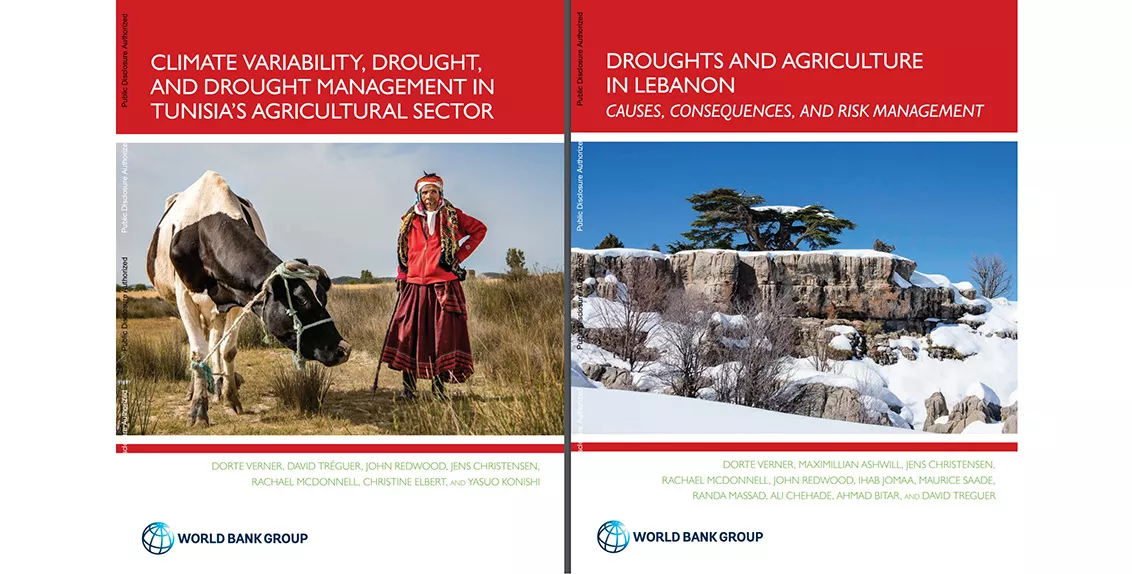Research reports highlight growing drought risks in Lebanon, Tunisia
1 October 2018
Two recently published research reports by the World Bank concerning climate change in the Middle East and North Africa (MENA) region underscore the growing problem of drought in Lebanon and Tunisia.
Among the main contributors are a team of scientists from the International Center for Biosaline Agriculture (ICBA) led by Dr. Rachael McDonnell.
These reports contribute to the ongoing collection of climate change knowledge in MENA countries, including a more complete understanding of the likely impacts of climate change on agriculture-reliant, rural communities.
Located on the Mediterranean Sea, Lebanon and Tunisia face dire consequences due to climate change. While long-term trends indicate increasing temperatures, short-term consequences include greater climatic variability, making it difficult for farmers, policymakers, and other stakeholders to plan ahead for lean years or catastrophic weather events.
Drought in both countries is a growing concern, with the potential to impact the region’s reliance on food imports, gross domestic product (GDP), and rural security, both in terms of food and livelihoods. While droughts frequently occur in the MENA region, scientists note an apparent rise in their occurrence and severity. In Tunisia, the most severe drought in the last five decades occurred over three consecutive years between 2000-2002. Likewise, drought in Lebanon is a growing concern for the agricultural sector, as well as economic and social stability in the country.
Important crops in these countries, such as fruits, olives, and cereals, especially wheat, are all negatively impacted by variable rainfall, increased temperatures, and long-term climate change. The dairy sector in Tunisia is also hard hit, where heat stress and restricted water availability, both a consequence of drought, limit the production and quality of dairy products. Droughts are especially challenging for the poorest regions, where livelihoods are mostly agriculture-based and potential adaptive measures are often underused due to financial constraints and information access.
For the most part, the response to drought conditions in both countries are emergency-based, leaving little room for long-term drought management. Both reports stress the need for drought management at local and national levels, as well as international platforms such as the United Nations Framework Convention on Climate Change (UNFCCC). Until recently, drought in Lebanon was not seen as a major national issue, leaving the country with no centralized drought monitoring system or comprehensive plan for drought management. While government-related drought response has a more substantial history in Tunisia, experts and local observers indicate an increasingly slow and less effective reaction to drought conditions in the country.
While both countries are without substantial, proactive responses to drought, the reports highlight areas in which water needs can be met. Local water management and access to robust extension services are essential for drought management. Geographic variability across both Lebanon and Tunisia makes local approaches, especially local vulnerability assessments, an important adaptive component for drought. Financial and technical innovations also provide farmers with new methods of managing drought. For instance, agricultural insurance offers farmers a bulwark against crop loss in the case of severe drought.
Data collection is also important for drought adaptation as it provides a holistic picture of long-term weather and climate trends – helping farmers, scientists, and policymakers anticipate future weather events. The addition of non-traditional crops, which are suitable for arid conditions, can also help farmers protect their livelihoods against drought. This includes blackberries and quinoa in Lebanon and barley and saline-tolerant tomatoes in Tunisia.
Taken together, these reports point to the ongoing threat of climate change to food security and economic stability around the globe. As scientists continue to study the world’s changing climate, it is increasingly apparent that countries must prepare for a future where weather is more extreme and less predictable.











